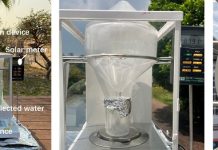
A groundbreaking method for crushing ores promises to save water and energy while producing better raw materials for batteries.
This new technique, called continuously compressing crushing (CCC), allows ores to break down along natural mineral boundaries during slower compression.
A recent study shows that using CCC for crushing and dry processing of graphite yields excellent results, making the mining sector more sustainable.
Traditional graphite processing relies on wet grinding, which consumes a lot of water and energy.
However, the CCC method offers a water-free alternative, significantly reducing environmental impact.
Researchers from the University of Oulu, along with the University of Eastern Finland and the South-Eastern Finland University of Applied Sciences (Xamk), tested CCC on natural ore samples for the first time.
“With the increasing demand for high-quality graphite in lithium-ion batteries, the CCC method’s ability to produce coarse-grained graphite flakes is especially important,” said Professor Shenghong Yang from the Oulu Mining School. Coarse-grained graphite flakes are highly valued for their quality and purity, making them ideal for various industrial uses.
“This new advancement supports the green transition and the development of electric vehicles,” added Professor Yang.
A major benefit of CCC is that it requires no water, making it environmentally friendly. Niina Paasovaara, a doctoral researcher at the University of Oulu, explained that slow compression, proven to be the most energy-efficient way to break ore material since the 1950s, is surprisingly underused until now.
Traditional rock crushing often leads to overgrinding, making further processing difficult and producing harmful dust. In contrast, CCC produces a rougher, cleaner product with a larger surface area, easing the next steps in processing valuable minerals.
“Developing graphite crushing technology is a step toward a more sustainable mining sector,” said Professor Yang. “In the future, we plan to test this water and energy-saving method on other ores containing critical raw materials.
However, there is still a long way to go before CCC can be used on an industrial scale. We also need to train new professionals for the mining industry, which is facing a labor shortage.”
Further research will focus on proving CCC’s energy efficiency at different crushing stages. The method is also linked to green chemistry research, which aims to use new, eco-friendly chemicals for concentrating valuable minerals. This work is being done in collaboration with the School of Pharmacy at the University of Eastern Finland.
“Our goal is to make the entire process of crushing, grinding, and processing ore minerals more water and energy-efficient, producing less waste,” Paasovaara said. “Together with new flotation chemicals, the CCC method will ensure the green energy transition remains clean throughout the ore processing stages.”
This innovative approach marks a significant step forward in creating a more sustainable and efficient mining industry.



